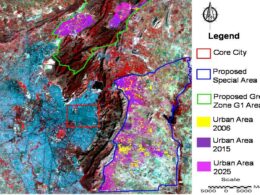Mapping Changes in Benthic cover
Interpreted Information from Mapped Benthic Cover
- The classified data (below figure) revealed considerable changes in the benthic cover adjoining the coastal area during 1977 to 2005.
- The benthic cover change analysis results indicated the increase in pavement area (6.97%) especially in the northern part of the Island.
- However, coral cover reduced by 10.49% during 1977 to 2005 due to increase in algae (4.75%) and seagrass (1.10%).
- The spatial distribution of benthic cover indicates that maximum increase in seagrass and algae was in northern, western and southeastern part of the Kuroshima Island.
- The overgrowth of algae and seagrass may result in a loss of fish and invertebrate biodiversity, as a loss of habitat heterogeneity occurs compared to that presented by the live coral.

